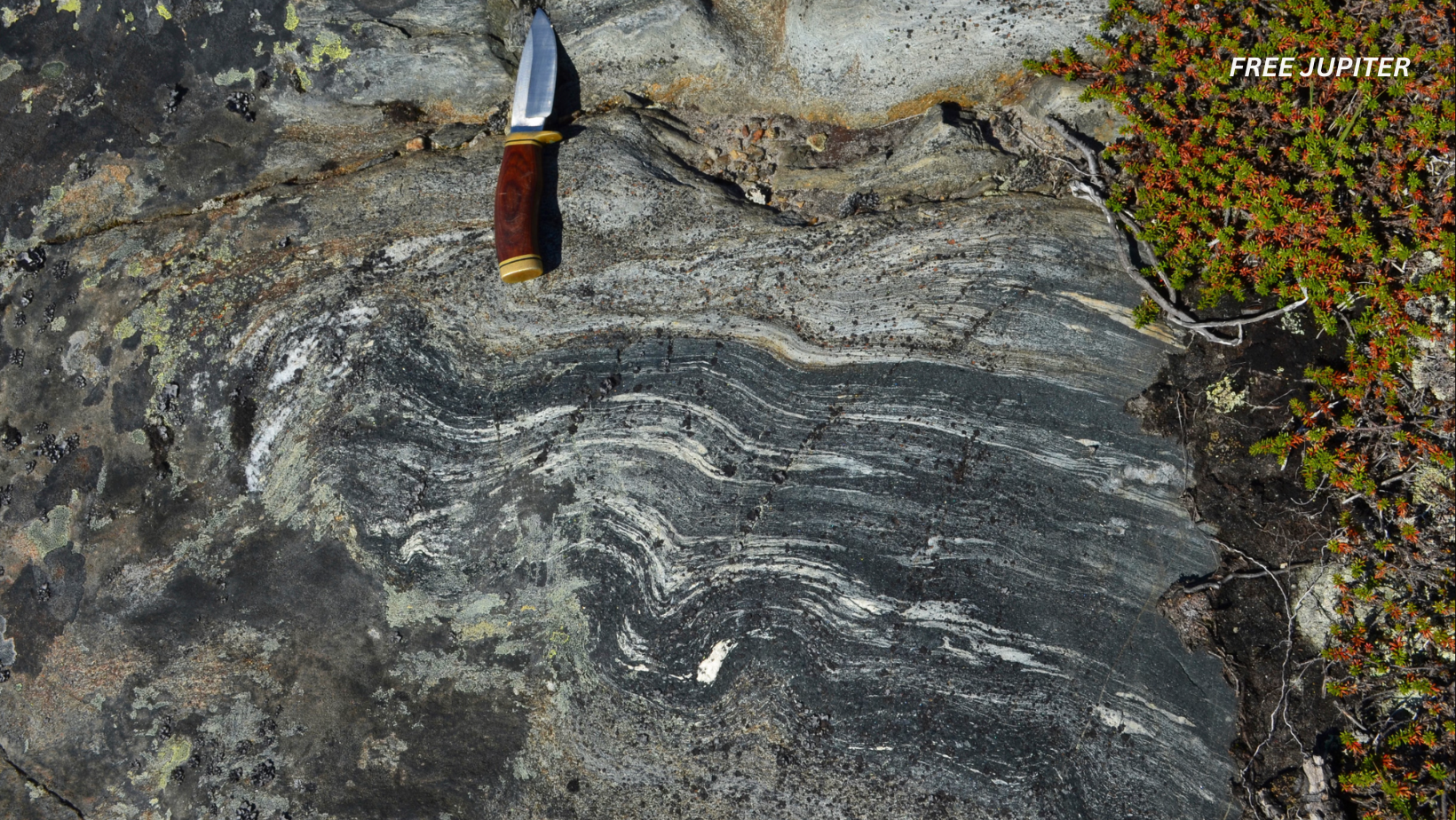Friendly Note: FreeJupiter.com shares general info for curious minds 🌟 Please fact-check all claims—and always check health matters with a professional 💙
Before there were oceans, trees, or even bacteria, our planet was just a hot, violent rock spinning through space. That was over four billion years ago—a time called the Hadean eon. And now, scientists have uncovered solid proof of that distant era in the form of Earth’s oldest known rocks, found in a quiet corner of northern Quebec, Canada.
These rocks aren’t just old—they’re really old. They’re leftovers from Earth’s earliest days, forged when the planet was still a fiery mess. And while they may look like ordinary hunks of stone, they hold secrets that are helping scientists piece together how Earth transformed from a hellish ball of molten lava into the vibrant, blue-green world we call home.
Rock Solid Evidence From Earth’s Baby Photos
Near a small Inuit village called Inukjuak in Nunavik, Quebec, a team of geologists led by Jonathan O’Neil from the University of Ottawa discovered what may be the oldest preserved rocks on Earth. These ancient samples are part of what’s called the Nuvvuagittuq Greenstone Belt, a tongue-twisting name for a strip of volcanic rock that has had scientists arguing over its age for years.
Some researchers had long suspected that this region might contain rocks older than 4 billion years, but there was never a clear scientific agreement—until now.
By carefully analyzing these rocks and using advanced dating techniques, O’Neil and his team finally confirmed that some of them formed about 4.16 billion years ago. That’s just 400 million years after Earth itself was born.
To put that in perspective: if Earth’s history were squeezed into a single calendar year, these rocks would have formed by early February—long before dinosaurs, before fish, and even before the first single-celled organisms.
Read more: One Gram of DNA Can Store Around 215 Petabytes. More Data Than All of YouTube!
What Was the Hadean Eon, Anyway?
Earth’s early years were anything but peaceful. The Hadean eon, which lasted from about 4.6 to 4 billion years ago, was like the planet’s chaotic toddler phase—full of heat, violence, and wild changes.
Picture this: a boiling hot surface covered in lava, volcanoes erupting constantly, and massive space rocks (the leftovers from building the planets) slamming into Earth on the regular. One of these impacts was probably big enough to knock a chunk off Earth that became the Moon.
Back then, there was no breathable air, no oceans as we know them—just steam, toxic gases, and red-hot rock. But underneath all the chaos, something remarkable was happening. Earth was slowly setting the stage for life.
Why These Rocks Matter
The rocks found in northern Quebec are more than just geological antiques. They’re windows into the Hadean world. What makes them so valuable is how untouched they are—preserved since the dawn of Earth’s crust.
Finding Hadean rocks is rare. In fact, these might be the only ones on the planet that survived intact from that time. Most early rocks were either melted down, recycled by tectonic activity, or destroyed by later geological processes.
So when O’Neil’s team realized these samples were the real deal, it was a huge moment. They weren’t just guessing—they had evidence.
Raed more: Scientists Uncover A Natural Way to Restore Vision
How Do You Even Date a Rock That’s Over 4 Billion Years Old?
Good question. You can’t exactly ask it its birthday. But scientists have a clever way of finding out: radiometric dating.
This technique relies on the natural decay of radioactive elements inside the rock. Some atoms—like samarium—slowly break down into other elements, like neodymium, over billions of years.
Scientists know how long this transformation takes, so by comparing how much of each element is in a rock sample, they can calculate its age—kind of like measuring the wax left on a slowly burning candle.
To be sure, O’Neil’s team didn’t use just one method—they used two independent isotope systems, both involving samarium and neodymium. And both told the same story: these rocks are at least 4.16 billion years old.
Layers of Clues
Here’s where it gets even cooler: the team found that younger “intrusive” rocks (which push through older layers) were about 4.16 billion years old. That means the volcanic rocks they intruded into must be even older.
Think of it like a nail hammered into wood. If the nail is new, the wood had to already be there. So, the volcanic rocks that hosted the intrusions? Possibly up to 4.3 billion years old.
This places them squarely in the Hadean eon, giving scientists an incredibly rare look at what Earth’s surface was like back then.
Why Should We Care About Ancient Rocks?
At first glance, a chunk of ancient volcanic rock might not seem like a big deal. It’s just a gray, weathered stone that’s been sitting quietly for billions of years, right? But these timeworn relics are far more than planetary souvenirs—they are Earth’s original storytellers. They hold vital information about the early days of our world, and by studying them, we can unlock answers to some of the biggest scientific mysteries of all time.
Let’s explore why these ancient rocks truly matter.
Read more: Scientists Say More Animals Are Conscious Than We Ever Imagined—Even Insects
They Are the Closest Thing We Have to Earth’s Birth Certificate
Ancient rocks like those found in Quebec are the geological equivalent of a birth certificate for Earth. They come from a time when the planet was still forming its outer shell. By analyzing them, scientists can learn how Earth’s crust began to solidify, how continents might have taken shape, and even how the internal layers of our planet—like the mantle and core—evolved over time. Without rocks this old, the first 500 million years of Earth’s story would be a complete mystery.
They Help Us Understand How Life May Have Started
Even though the rocks themselves don’t contain fossils, they help scientists piece together the environmental conditions that existed before life emerged. The minerals inside them, along with their chemical signatures, can tell us what the atmosphere was like, whether liquid water was present, and how Earth’s temperature fluctuated.
If we know what kind of chemical “soup” was bubbling on the early Earth, we can better understand how the first simple life forms may have developed. In other words, these rocks could help explain how non-living chemistry turned into biology.
A Quiet Discovery With Loud Implications
It’s easy to picture major scientific breakthroughs happening in shiny labs with dramatic eureka moments. But this one started quietly—with a few rock samples picked up in the tundra near a remote village, and a team of scientists who refused to give up on a mystery.
After years of debate, testing, and verification, we now know that the Nuvvuagittuq Greenstone Belt is more than just an odd name. It’s a geologic time capsule from the Hadean era—perhaps the only surviving one we’ve got.
This discovery bridges the gap between Earth’s chaotic origins and the world we live in today. It’s a reminder that even in the most unassuming places, the planet still holds ancient secrets waiting to be revealed.










